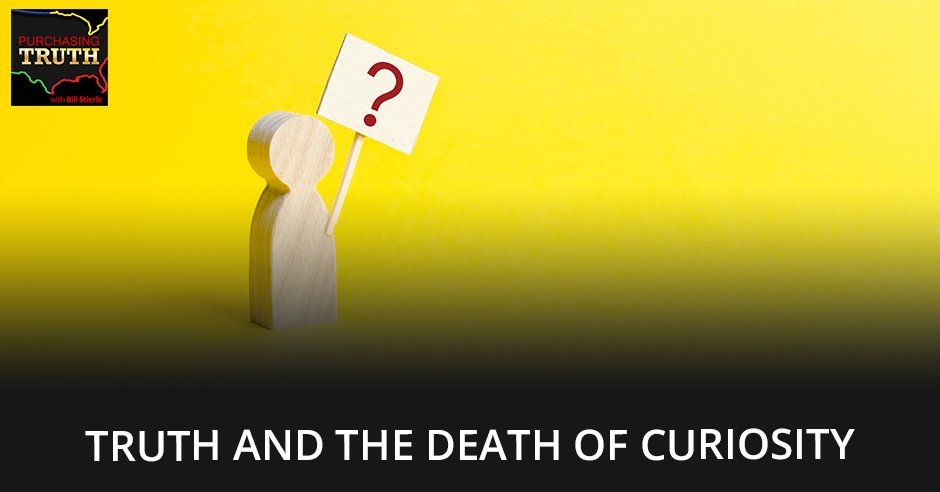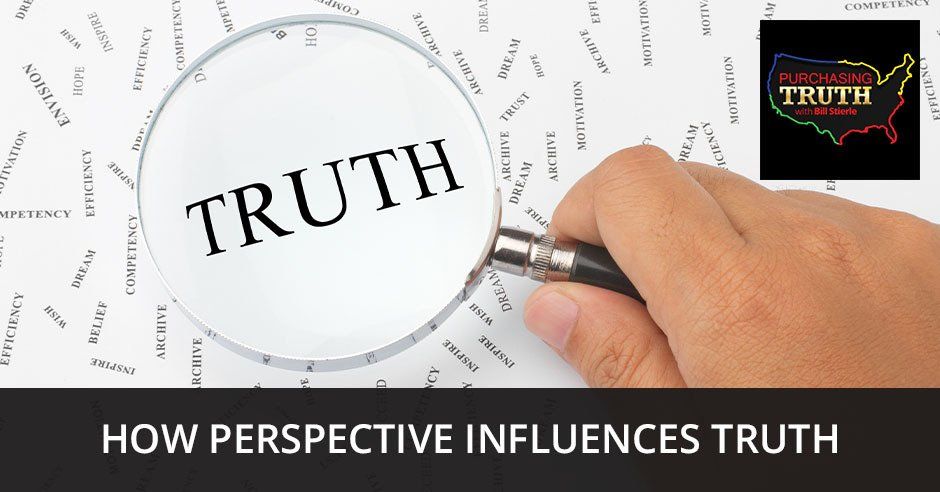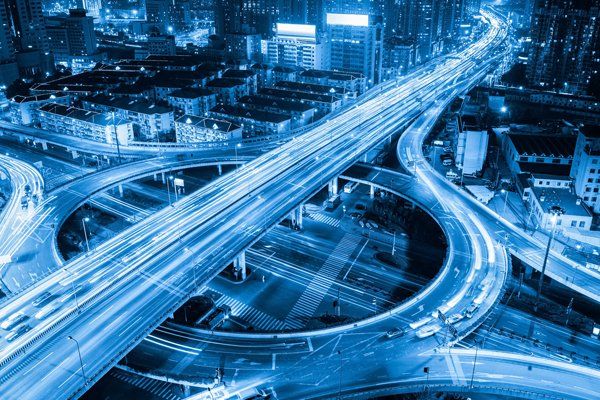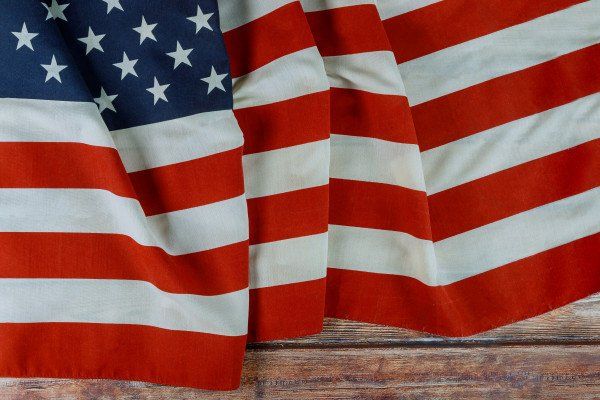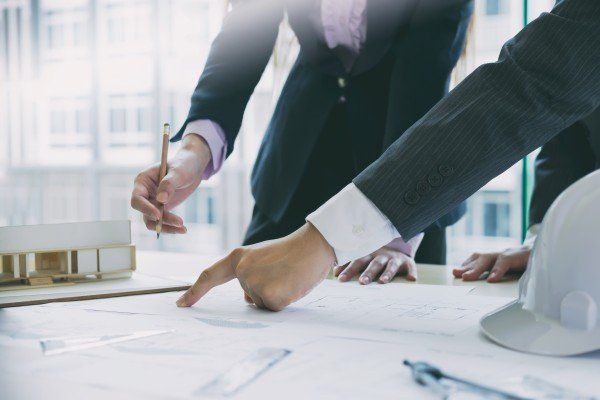The Infrastructure Bill Debate: How Should Infrastructure be Defined?
Subscribe Today!
The United States needs certain structures for it to run effectively, but it seems like the nation doesn’t necessarily agree on what constitutes infrastructure. For the Republicans, the proposed infrastructure bill is nothing but a government spending spree. For the Democrats, the bill is critical for facility buildup and also for job-creation. What we have as a result is a debate where one side is trying to limit the definition of infrastructure into a narrow category, while another side is trying to make it as inclusive as possible. Just how broad can we get when it comes to infrastructure? Which projects should be seen as essential if we are to consider future development? Listen in as Bill Stierle and Tom share their thoughts on this pressing issue.
---
Watch the episode here
Bill, it’s interesting, there is this battle going on in our country about defining what it means to have a bill for infrastructure. It’s going to be an interesting messaging and communication battle. It’s going to be fun to watch and see who prevails in that battle to define exactly what might be included under the umbrella of infrastructure.
Making communication safe around alternative points of view, and being able to create a collaborative narrative versus an adversarial narrative is a unique part of our history as a nation. To be this exposed to multiple messages that can come in from anything that can knock somebody off the pedestal with either a small charge or get away with a big charge. Those are two dynamics that are taking place. All there has to happen is the right small message can knock somebody out. There also could be this big message is going to like, “There’s a lot of wrong over here but it’s not that big of a deal.” How does that exist at the same time in a society where you can’t even have an honest discussion about, “The truth around this is this, but he’s on our side so there’s not a lot of problems there?”
Our perspective is getting adjusted. It’s been hard to not be so deluged with biases and people trying to influence our biases. All you got to do is concentrate on one particular silo and you’re going like, “How are those people buying what’s in that silo?” That information is true but it’s limited. It’s only a partial truth around that thing. We’re going to have a little fun talking about how this infrastructure piece is going to be discussed. Is it an investment or is it a waste? Is it needed? I don’t know. You built something in 1950, 1960, 1970. Do you think you may not need to replace it? Tom, you and I can have some fun with this one. Have we ever bought a car that we held on to for too long that we should have got rid of it before it ran into the expenses that it did?
I’ve gone down that road of spending too much money to try to fix a car when I should’ve put a bullet in it and gotten a new car. That’s a tricky one. It is a good example, a good metaphor for what’s going on around America when it comes to our infrastructure. Infrastructure in its purest sense is roads, bridges, airports, train stations, trains, the rails themselves, and all these sorts of things. The question that’s going to be debated is, does that also includes electric cars and electric charging stations? Not just the roads themselves, but the vehicles and the infrastructure to drive on those roads. Does that include other aspects of infrastructure? What about reservoirs and clean drinking water systems? We’re having a crisis in Florida going on with wastewater systems that are crumbling and leaking.
The pollution that can get into the environment from that piece could be that negative amplification that allows people to wake up. The brain does much better with negative amplification than it does with positive amplification. When you’re buying for the future, you go like, “There’s a positive amplification for, “We’re moving forward here.” The negative amplifications are, “What if we overspend? What if we don’t see something that’s coming that we need to see coming?” Notice that sentences can mess us up. What if we spent that we don’t see coming? I don’t have that kind of future thinking in the crystal ball that is needed. The person says, “What if?” That safety, that doubt, that skepticism, the truth and the trust that there might be something. I don’t know. Let that thing show and then we’ll deal with it then.
It might be something my dad would have said. I don’t want to think about that thing that’s over there that I don’t see. I want to do this thing here and fix this thing here. It’s not the best way to do it maybe, but at least I am getting progress. At least I’m getting movement. That’s one of the challenges that we have with our own brain and our own bias is that we’re going to get dinged about the value of. What is the value of this thing that we’re purchasing? What are we getting? Think about the highway system in the United States. You and I talked about this in the past. You drove back and forth to Colorado.
The brain does much better with negative amplification than it does with positive amplification. CLICK TO TWEET
It was quite an experience. I can think of two major infrastructure projects in the country that have been critical to America’s growth and all our freedoms to drive from state to state on roads. Before the Interstate Highway System, I was reading this interesting article that talks about how Dwight Eisenhower was a military commander in World War II. In the late ’40s or early ’50s, before he was president, he was part of a military convoy that went from the East Coast to the West Coast driving across the country. He was shocked, alarmed and frustrated to the fact that during a good portion of that journey, this military convoy could only go at a speed of 10 miles an hour.
When you think about traveling across the country that’s a 3,000-mile journey at 10 miles an hour, that’s going to take you a long time. That wasn’t the entire trip but portions of it. You think about it in the Midwest, in the Rockies, and certain places where roads were not built for traveling through, but locally getting around from here to there. You can understand how that might have been difficult. This drove him to champion the Interstate Highway System when he was the president. That allowed me and my family to drive for more than half the trip at 80 miles an hour especially through Utah, going from Colorado to California, going through Utah. The speed limit is 80 miles an hour. A lot of the rest of the trip that’s still through Nevada and Arizona is 75 miles an hour.
You can do that in two days. You can go on a 1,100-plus mile trip in two days. That’s practical. It would not be possible without the Interstate Highway System. Forget just family driving. What about all the goods and services with trucks traveling across it? Even as I’m driving on that trip, I’m experiencing a lot on this highway at 80 miles an hour in Utah with cold weather, frost heaves, and all sorts of things. My car’s going up and down as I’m driving fast. I’m getting a little nauseous. It’s like an amusement park ride sometimes.
Clearly, roads and bridges we’ve seen in years, Minnesota, Oregon, even in Tennessee there have been bridge collapses. There is a lot of this infrastructure that you can’t build it once and forget it. It’s got to be maintained. It’s a truly bipartisan issue that everybody can agree that our roads, bridges, and travel transportation infrastructure is critical. It needs to be maintained. It’s overdue for a serious overhaul. We haven’t invested in this in half of the century.
I appreciate the perspective that we’re trying to dig here and get people to hear the perspective of, are we going to narrow the message or are we going to expand the message? A narrowing message says, “It only does 5% to 10% on roads and bridges.” That could be all that’s needed in roads and bridges. It’s that amount that would make a big difference. It’s not they should spend more about it or that proves that they’re putting money elsewhere while there might be other infrastructure problems that are showing up that are future-oriented.
Let’s throw in there the Texas electric grid that we experienced. There’s an infrastructure problem that was hurt terribly by the weather.
The pesky thing called weather and the inability of that closed system of, “We’re Texas. We’re going to do our own electricity here. We’re not going to take any electricity from other states. We’re not going to be wired in. We’re going to keep our grid like this and run it as a private institute.” It’s hard to get a perspective of this when we got people shouting for both sides.
Bill, to add one more thing and you have a lot of experience with your work in the state of Michigan, with the City of Flint and the water crisis there. My understanding is proposed in the infrastructure bill is money to replace pipes that have lead in them, especially in some of our water systems in cities across the country. That’s a serious infrastructure need there as well.
It’s hard to gain the perspective that capitalism needs a strong infrastructure to sit on to run well. There are things that capitalism doesn’t do well. You want it to participate in a certain sector of the economy. Whereas things that need to be done in the public space, you want to keep in the public space. Things you don’t want to think about, do or have, you keep that in the public space. We don’t want to have prisons, but if you make it private then that company needs to grow. I don’t want more prisons because then I’m going to look around for more people to jail to fill my prison. I’m going to start prosecuting smaller and smaller crimes if I do that. I’m going to lobby to make more people go to jail because I’m a private business. If you have that in the public sector, there’s no one go-to advocate for it because it’s something that the public sector takes care of. It’s messy and we don’t want to do much of it. We want to run it as cost-effectively as possible. As soon as you put it as a private company, it’s how do we make it more profitable versus how do we make it more cost-effective? Those don’t necessarily go together.
If you make it profitable at the expense of people’s conditions of their lives or their liberties, you can see how easily the profit motive can trample over human rights and maybe the issues of justice, fairness and things like that. That’s really troubling. I don’t think we want to paint infrastructure broadly here as a pure and good thing. There are things proposed in the infrastructure bill that could be argued, depending on your perspective. Is that really infrastructure? Is home healthcare for seniors’ infrastructure or is that a social service? There are things in there that are being criticized. This is where the messaging and the communication come into play. The Democrats are trying to define infrastructure more broadly. The Republicans are trying to define it more narrowly. Not only more narrowly, but they’re also trying to paint it as a tax and spending spree by the Democrats.
Infrastructure is not a weekend in Cabo where you’re drinking and you’re going to spend money for this thing. You get a building. You get a bridge. You get a program. You get an infrastructure. You get a new cable system for rural communities. You get the American modern world to increase and to catch up with many other countries that have pulled way ahead of us in technology. We get to be and start to become competitive and more interconnected in a better way, and that’s not a bad thing.
Another brief story to put some perspective on this. I drove across the country when I was seventeen years old with a buddy. We went from Massachusetts to San Diego. We broke down several times in our vehicle, which was a 1969 VW Beetle. We broke down in the middle of Kansas a couple of times. We didn’t have any cell phones. We didn’t have a lot of modern conveniences. It was for a few days there. It’s tough to get some support, get the vehicle to where it needed to be to get fixed and continue on our journey. On my journey driving from Colorado to Southern California, we had some spots through Utah where the internet connection or the cell phone connection was spotty. For most of the way, I could make a phone call.
Should that infrastructure be improved by modern standards? Yes. If you break down, you want to be able to call AAA, get some support and do that. In fact, stopping at a rest area to look at this beautiful scenic overview of this canyon carved by water thousands of years ago. Looking up on a hilltop, there was this odd tree that was much taller than all the other trees. It took me a second to realize, “That’s a cell tower made to look like a tree.” Infrastructure includes our communication in the modern 21st century, the internet being more broadly available. Certainly, it’s a first-world problem, maybe. Anybody driving for two days with kids in the car is thrilled that there’s an internet connection and their kids can stream Netflix as we’re driving.
It’s like, “How did we get to this spot?” We got to this spot by some moves that were made by the government to build the infrastructure that was needed for those companies to run on, to allow the initial expanse of those businesses to work the way they do. I would like the marketplace to be more competitive. I’d like them to be able to work in a way to improve their services, to compete with another capitalist company that, “We’re in your area too. You got to take care of Mr. Jones over there. Otherwise, he’s going to be my client soon. He’s going to be my customer.” That is more of that healthy give and take or market share inside the marketplace.
That’s a vibrant capitalist, “What we should be striving for to have that? It’s over there and why are we not doing it here?” We’re protecting everybody else’s turf. That’s not capitalism. That’s more turf force and gang warfare or “This is my territory, not your territory. Don’t come in here. You’re not doing this because these are my customers.” I don’t think that’s exactly capitalism. We’ve got to be mindful of how we communicate the message of infrastructure to be inclusive.
I mentioned that the Republicans are broadly trying to paint this infrastructure bill that the Joe Biden administration has proposed as nothing more than a tax hike on corporations. They’ve rolled out the job creators messaging again saying that, “They’re taxing job creators.” It’d be interesting to see if that message plays well again because they said, “We need to lower the taxes done by job creators in the Donald Trump administration.”
It’s not whether it plays well or doesn’t play well. Our communication is all about activating an old belief. Trickle-down economics is going to come around again because people have heard that phrase and term. There was enough energy that it was a good thing in the past even though it wasn’t a good thing from a numerical standpoint. It was a good thing for the people that got the tax break but it was not a good thing from this thing they said they would do, that a job creator would do. For all the readers out there, think of this as an activation of a belief bias. Even though we’re talking about Republicans here, the Democrats have their own sticky talking points that they go after. They’re looking to pluck in things that they would see as valuable that many Republicans would not see as valuable.
Does health care for the elderly or whatever amount of money that’s allocated for whatever that part of the bill is, does that become the weak link in this chain of things that says, “Do they go attack that? They then break the chain and the whole bill goes away because they found the weak socialist thing that’s going to help elderly people.” Is that the thing? “I don’t want to pay for grandma, grandpa anymore or somebody else’s grandma or grandpa. I don’t want to do that because I see that as a waste of money.” It’s still a head-shaker that people are thinking in that way because things get out of proportion. It’s like, “This is only this amount of money to take care of a small problem in a specific area but all of a sudden, that gets amplified.” That’s the negative amplifier we were talking about. That’s what happens in communication is it’s a negative amplifier or a positive amplifier about the thing to buy or sell.
Our brain bites on the bias narrative, regrettably.
It’s interesting to see the Democrats and the current administration is trying to cast the bill as a job-creation bill. It is going to rebuild our infrastructure and the same people put a lot of Americans back to work, which is at a time when our economy has been hurting and a lot of people are out of work, it’s interesting to see how that message is received. Does that get amplified? Certainly, they’re trying to do that. We should do some research and find out who defined the word trickle-down economics? Did the Republicans do that to themselves? I would imagine, Bill, if you were advising them back in the ‘80s on communication messages, would you call it trickle-down economics, or would you label it as something like flow-through economics, something that had a more positive spin if you’re trying to sell that? Trickle-down seems like, “I’m getting a few drops of water instead of the waterfall coming down from above.”
What happens in the brain is that a phrase and a branding message become easily understood as something good or bad. Even if it’s not congruent with the phrase trickle-down because the messaging is not great if you look at it. You keep thinking about, “Trickle-down, I’m waiting for money to come to me.”
It’s like you’re a dog under the table begging for crumbs and scraps to fall off the table. You’re not getting a real meal.
You and I are taking a slash at a brand imprint that would take hundreds of messages and images to go hammer that thing. What are some things that are tricky? Pee and other things like that are trickly too. It’s like, “Do you want to be that person?” All of a sudden, we’re taking a hammer on a brand imprint that will be re-messaged just like the tax spend and socialism. Those terms have been painted in a way that we can’t have a truthful discussion. Police officer and fireman is a socialism piece. These are called social constructs. These are things we all use that we find valuable. We use those and we want those around because we would like those things to be cared for in our society. Because if they’re not there, that will not be a good thing for a modern growing first world country.
We need to do a better job to make sure that capitalism has the foundation for it to run on. Infrastructure is a big part of that.
CLICK TO TWEET
Even you and I talking about this thing is disturbing because if we were talking about things on the frontend of growth and how do we get an expansion to take place, the conversation would be, “How are we going to put the next entrepreneurial thing in place so we can hire ten more people so that we can do this little project and see if we can get that to stick in the environment? If that doesn’t work then we’ll move over here and do this.” Those are giving things for people to do, for people to have an experience and a shared journey which is more of a growth mindset that is different than fighting over infrastructure.
That doesn’t sound like a good strategy but we are in a very unique time where messaging can be siloed and people can be kept away from the truth. That’s what we have got to do a better job of is to make sure that capitalism has the support it needs and the foundation for it to run on. That foundation comes in multiple different ways. It’s not just roads and bridges. It is multiple different industries that need infrastructure upgrades. It’s hard for people to think of it that way but it’s getting the expanse, changing our perspective and our perception in order to include a wider messaging. That can make a big difference going forward.
It’s going to be fun for us to watch the debate continue to play out between the two perspectives, and see which messages stick as the Republicans try to narrow the message and say, “Infrastructure shouldn’t include all this other stuff. It should only be this narrow slice. We shouldn’t spend that much money.” Democrats continue to expand it to try to include as much as possible because that’s their nature. It’s a different mindset of investing in the future or being financially prudent.
We need to take a look at a couple of our different business sectors and figure out how to best support and create a new set of soil for the new businesses to grow upon, whether it’s charging stations for electric cars or repair companies. There’s got to be somebody who’s going to fix those electric cars charging stations. Companies will come up and they’ll be 3, 5, 7 of those companies initially. They’re going to do different parts of the nation. They’re going to fix the things that break for electric cars. We got to get ready for that because all those gasoline stations, they’re going to be converted into other facilities or have a charging station part in their world. It’s going to be interesting to see how the world’s going to look in the next years as we move forward here.
In Southern California, we see Teslas on the road every day. I can’t drive a mile in Southern California without seeing a couple of Teslas. I know that’s not the same all over the country. As I’m driving through Utah on this long stretch of road with few stops with services, I saw a Tesla on this journey. I was like, “That Tesla must have to be careful.” I know they’re first-world problems. With this Tesla, I’m like, “They must have a real specific map of where the next charging station is because you don’t have one at every service stop along the way.” You’re right, Bill. There’s a whole thing as we move toward electric vehicles.
Electric vehicles are common. I am seeing ads all over the place from GMC for an all-electric Hummer that is coming. They’re taking reservations on them. You’re going to have a big vehicle. Maybe it has a 350-mile range but in some of these states, you can go 300 miles without much of any gas station too. They’re going to have to outfit all these stops especially in the middle of America with charging stations. Who’s going to do that? It takes the government to invest in that in order to make it happen.
It’s a big thing. We got to let the government do the big things that need to be done. Not all of the big things. There are plenty of people that are government contractors that are businesses that will sign and do a contract for a part of that work. It’s not that the government is spending and doing it. The government is hiring some company over here in Topeka, Kansas to get it done. That’s the perspective that I would like people to get. It’s to relax your mind into not get caught in the silo that you’ve been spoken into. The truth regarding infrastructure is that we’ve got to be able to do a better job of looking at it and getting our eyes up. We’ve been looking with our eyes down for a long time.
The last few years had been difficult. We’ve got to start not looking through the rear-view mirror to drive the car of the United States. The last slogan that we went on was, “Make America great again.” It was a rear-view mirror look. It wasn’t forward-looking. It was “make it great again” as if there was something missing. We need to get our eyes up and the only problem is that we weren’t driving anywhere. It wasn’t a future-oriented narrative, regrettably. It could have been future-oriented, “This is how we’re going to make America great again,” and do something to make America great again instead of just giving a tax break.
We’ve got a few more things to do to broaden the narrative. It’s hard to fight for the truth when we have different silos. The next time we talk, Tom, we can take a look at how the debt impact is, how money works because the money narrative gets split pretty good. This version of the truth in a perspective might even be part 2 or part 3 that we’ve talked about perspective. It’s about the truth in infrastructure. How do we get a fresh perspective on infrastructure? There is more to come on this next time.
I look forward to talking about the debt. I think it’s a great next step.
Thanks, Tom.
Thanks, Bill.
Love the show? Subscribe, rate, review, and share!
